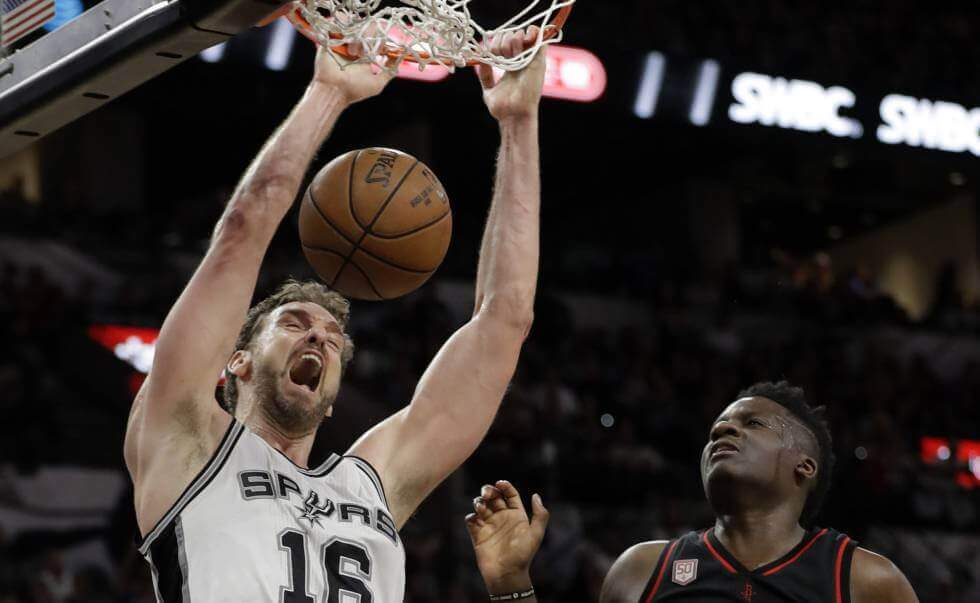Positions That You Can Play in Basketball

Basketball is one of the most popular sports in the world. In fact, nowadays, it’s making even more of a social impact as children are becoming more interested in playing it at a competitive level. Read along to find out about the different positions that you can play in basketball.
The first thing you should know is that the different positions in basketball are often associated with the athlete’s height and size. The tallest player, for example, is usually the center, while the shortest player on the team and the player with the best ball control is usually the point guard.
Basketball is played with five players on each team. Each of the five players has their own roles and responsibilities. Each team is made up of a point guard, a shooting guard, a power forward, a small forwards and a center.
While basketball has advanced considerably in recent times, players of specific positions still have specific responsibilities. Here’s everything you need to know about the positions in basketball:
The positions you can play in basketball
Point guard
The point guard is in charge of driving the ball and making it circulate around the court. Point guards are often an extension of the coach on the pitch. They are the players who have possession of the ball the most during the game. Therefore it is important for them to have good ball control and passing skills.
The point guard also needs to have a good view of the basketball court in order to distribute the ball to teammates. They are also responsible for taking the ball into the opponent’s side of the court and starting offensive plays. Most point guards also have great three-pointer skills, however, it’s not that important.
Shooting guard
The shooting guard is a scoring position and it’s often reserved for the team’s best shooter. The shooting guard must be able to take shots frequently from different areas of the basketball court. They must also have the physique to contribute and perform all types of attack actions.

The shooting guard collaborates closely with the point guard. This means they can also take secondary control of the ball during attacking plays. The shooting guard must be able to dribble fast and they should also have a good vision of the court. Did you know that one of the greatest basketball players was a shooting guard? That’s right, Michael Jordan occupied the position.
Small forward
The small forward is usually the most versatile of the five positions. It’s both an offensive and defensive position. Similar to the shooting guard, the small forward should be able to take shots for different positions. They should also be able to penetrate the area and create plays for the rest of their teammates.
The small forward is a position that requires strength. They usually have to fight against screens and blocks from bigger players. As a forward, it’s also important to participate in offensive rebounds. Small forwards have good ball handling skills.
Power forward
Multiple skills are required to play power forward. Players who occupy this position tend to be great defenders, they are able to protect and cover all the different positions. Power forwards are usually tall and very athletic.
They are also involved in both defense and offense. Power forwards are pivotal when it comes to getting rebounds and creating plays. Kevin Garnett, Tim Duncan, and Larry Bird are some of the best power forwards in the history of the NBA. The best Spanish player of all time Pau Gasol also occupies the position.

Center
Finally, the center is usually the tallest and strongest player on the team and they can generally be found under the basket. They are required to be physically dominant. The two main responsibilities that this position has is defending the basket and rebounding the ball on both sides of the court.
During offensive plays, centers are usually positioned close to the basket. Most of their points come from offensive rebounds.
As you can see, the positions that you can play in basketball are relevant to the game. Therefore, you should stay concentrated and motivated regardless of the position you choose to occupy.
Basketball is one of the most popular sports in the world. In fact, nowadays, it’s making even more of a social impact as children are becoming more interested in playing it at a competitive level. Read along to find out about the different positions that you can play in basketball.
The first thing you should know is that the different positions in basketball are often associated with the athlete’s height and size. The tallest player, for example, is usually the center, while the shortest player on the team and the player with the best ball control is usually the point guard.
Basketball is played with five players on each team. Each of the five players has their own roles and responsibilities. Each team is made up of a point guard, a shooting guard, a power forward, a small forwards and a center.
While basketball has advanced considerably in recent times, players of specific positions still have specific responsibilities. Here’s everything you need to know about the positions in basketball:
The positions you can play in basketball
Point guard
The point guard is in charge of driving the ball and making it circulate around the court. Point guards are often an extension of the coach on the pitch. They are the players who have possession of the ball the most during the game. Therefore it is important for them to have good ball control and passing skills.
The point guard also needs to have a good view of the basketball court in order to distribute the ball to teammates. They are also responsible for taking the ball into the opponent’s side of the court and starting offensive plays. Most point guards also have great three-pointer skills, however, it’s not that important.
Shooting guard
The shooting guard is a scoring position and it’s often reserved for the team’s best shooter. The shooting guard must be able to take shots frequently from different areas of the basketball court. They must also have the physique to contribute and perform all types of attack actions.

The shooting guard collaborates closely with the point guard. This means they can also take secondary control of the ball during attacking plays. The shooting guard must be able to dribble fast and they should also have a good vision of the court. Did you know that one of the greatest basketball players was a shooting guard? That’s right, Michael Jordan occupied the position.
Small forward
The small forward is usually the most versatile of the five positions. It’s both an offensive and defensive position. Similar to the shooting guard, the small forward should be able to take shots for different positions. They should also be able to penetrate the area and create plays for the rest of their teammates.
The small forward is a position that requires strength. They usually have to fight against screens and blocks from bigger players. As a forward, it’s also important to participate in offensive rebounds. Small forwards have good ball handling skills.
Power forward
Multiple skills are required to play power forward. Players who occupy this position tend to be great defenders, they are able to protect and cover all the different positions. Power forwards are usually tall and very athletic.
They are also involved in both defense and offense. Power forwards are pivotal when it comes to getting rebounds and creating plays. Kevin Garnett, Tim Duncan, and Larry Bird are some of the best power forwards in the history of the NBA. The best Spanish player of all time Pau Gasol also occupies the position.

Center
Finally, the center is usually the tallest and strongest player on the team and they can generally be found under the basket. They are required to be physically dominant. The two main responsibilities that this position has is defending the basket and rebounding the ball on both sides of the court.
During offensive plays, centers are usually positioned close to the basket. Most of their points come from offensive rebounds.
As you can see, the positions that you can play in basketball are relevant to the game. Therefore, you should stay concentrated and motivated regardless of the position you choose to occupy.
All cited sources were thoroughly reviewed by our team to ensure their quality, reliability, currency, and validity. The bibliography of this article was considered reliable and of academic or scientific accuracy.
- Sidney Goldstein. La Biblia del entrenador de baloncesto: Una guía sistemática y exhaustiva del entrenamiento. Editorial Paidotribo. http://www.deposoft.com.ar/repo/publicaciones/La%20Biblia%20del%20Entrenador%20de%20Baloncesto.pdf
This text is provided for informational purposes only and does not replace consultation with a professional. If in doubt, consult your specialist.








